Colombian coffee sector reactivates despite the crisis
Published on 19 June 2020
Colombia is going through difficult times at the peak of coronavirus cases and restrictions on mobility. However, the production and export of coffee in contrast with this situation.
There has been no country that escapes the economic impact of COVID-19. The reduction in economic production at the global level is only comparable to that of the Great Depression of the 1930s and is a mixture of restrictions on internal and external demands.
The impossibility of physically operating for many businesses has been transversal to all countries, which at the same time will reduce their demand for products that are not essential. Therefore, exports are also expected to be affected by the cooling of productive activity around the world.
But fortunately for Colombia, coffee has an inelastic demand (that is, not very sensitive to price variations), even though it is not essential. In this way, the best production performance has been exploited and placed on the market.
According to the Cesla.com portal, so far this coffee year (that is, since October 2019), production increased 2% to 9.3 million bags, and in May the increase was 6% compared to the same month from the previous year, with which it reached 1.2 million bags. The following table shows the performance of exports of the main presentations of Colombian coffee and its derivatives, among which in beans and unroasted (the commodity that is quoted on international exchanges) had an outstanding performance, as well as essences and concentrates.
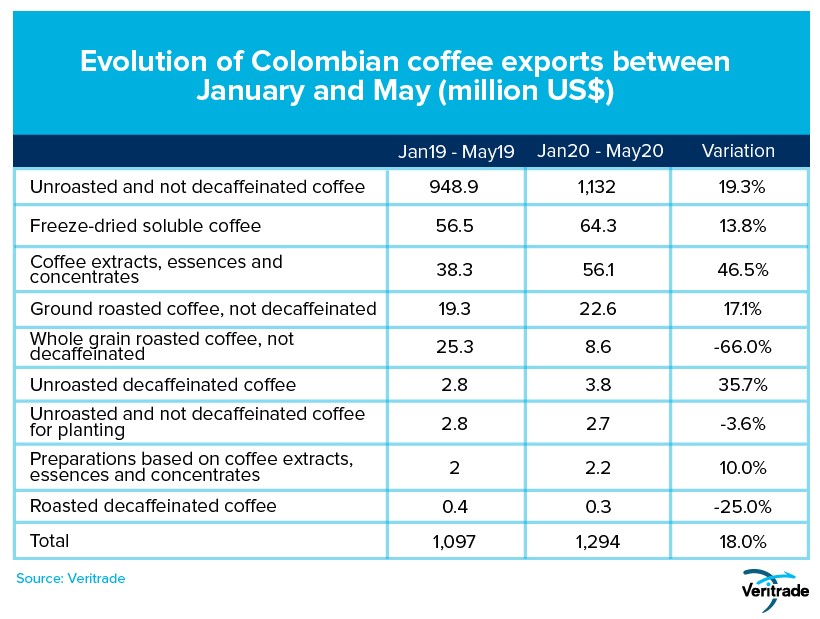
It should be noted that the increase in the value of shipments has gone in the opposite direction to the economy, with higher increases in May, when the impact of the pandemic had already been fully assimilated. Also, the rise in production has been sustained since 2018, and in 2019 a record of 25 years was reached, with 14.8 million bags, so Colombian coffee growers can be drivers of the economy of their country if the trend keeps.
The following tables show the monthly performance of exports of the best performing presentations. It is remarkable the fact that the grain and its derivatives have had a countercyclical behavior, something that is more than good at such difficult times for Colombia.
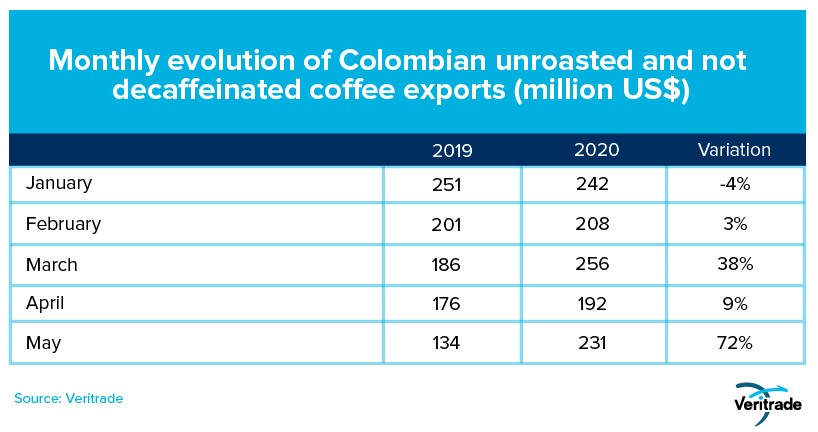
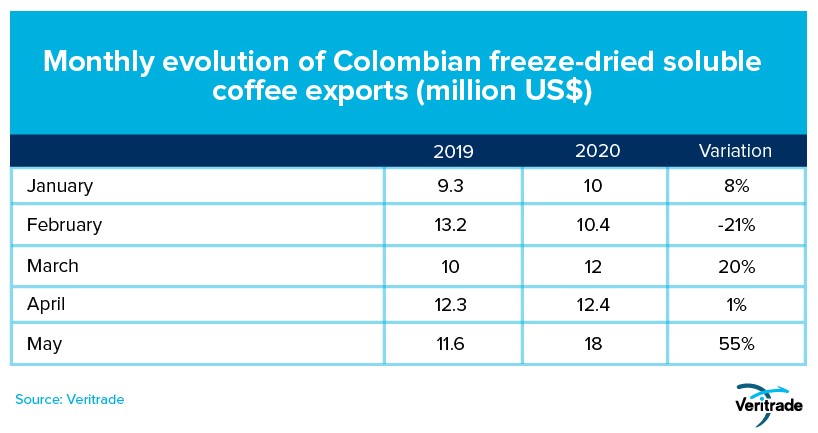
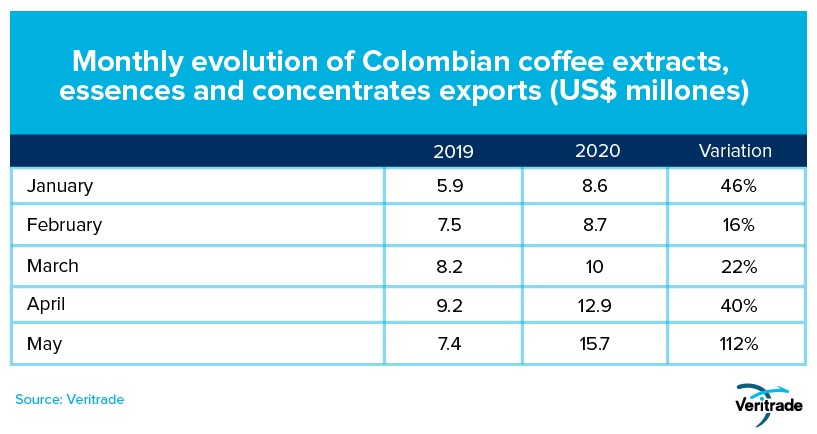
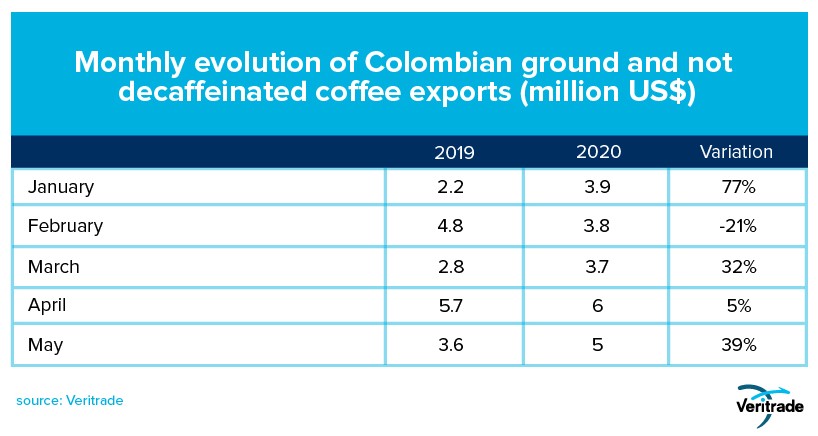
Currently, Colombia is one of the countries that is going through a more critical phase in the coronavirus transmission curve, along with Brazil, Peru, Chile, India, and Russia. Although the country's government has initiated the reactivation plan by authorizing operations to key productive activities that are not expendable or not remotely viable, the restrictions on activity will continue for several weeks as long as the contagion and death curve does not decrease until a level at which the disease can be considered controlled.
In parallel with coffee, other products that the country can take advantage of to recover its economy are flowers. Fortunately for Colombia, the values of its shipments have also registered countercyclical increases and if the pattern continues, the contribution would be considerable. It should also be noted that this is the third most important product in the country's export portfolio, after oil and its derivatives and coffee. The following table shows the economic performance of shipments so far this year.
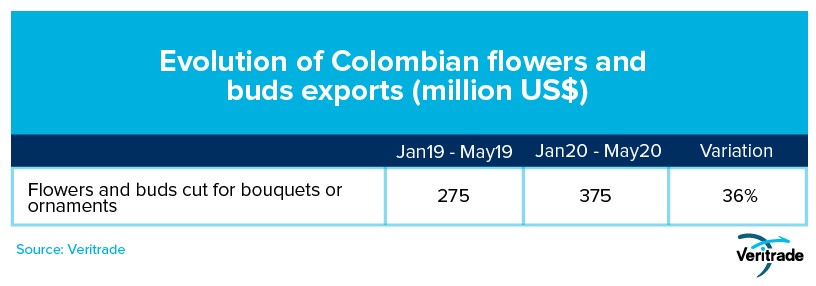
Amid the enormous challenge of overcoming the economic impact of quarantine and production restrictions, the agricultural sector has brought good news for Colombia. Production in the field, the logistics chain, and commercial work must be maintained with efficiency, consistency, and quality, especially if these are sectors that involve the use of significant amounts of labor.
For more information on the performance of Colombian exports, you can enter the Veritrade portal.
Request your free trial by going to https://bit.ly/3fEoXw5